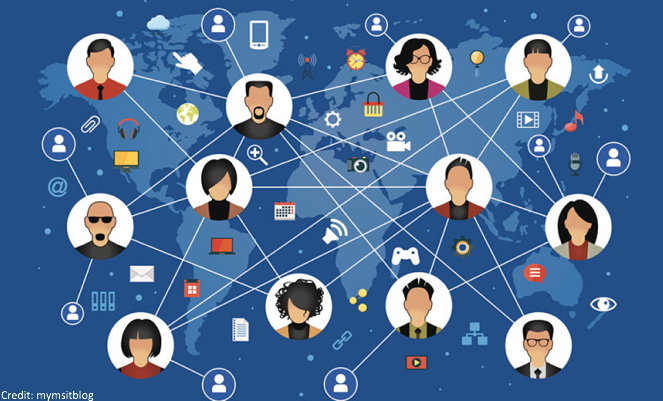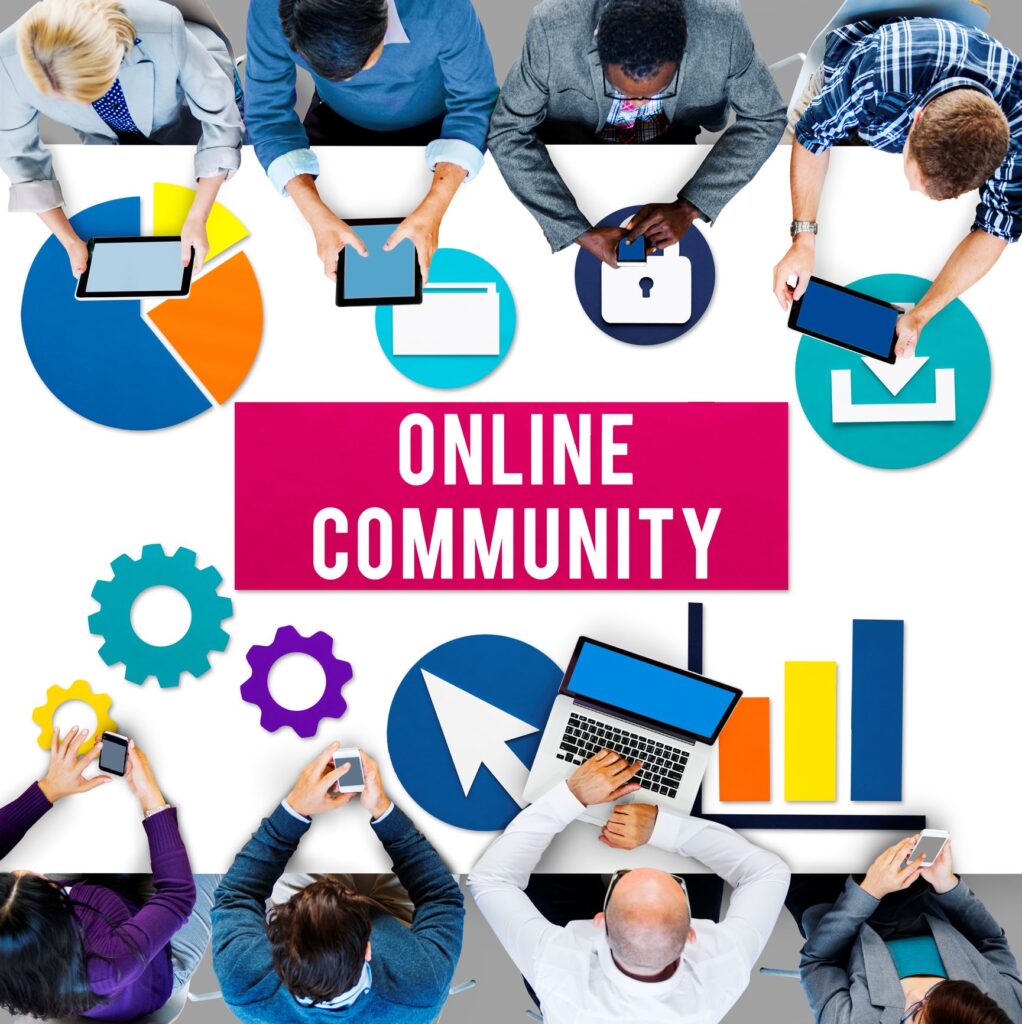A Few Biggest Advantages Of Online Communities
Social network are growing in popularity. From brand communities to customer service, increasingly we are quitting broad, internet sites, and looking smaller, niche spaces in order to connect. A study learned that 76% of internet surfers visited a web based community of some kind – several that is increasing year in year out.

Online communities are increasing in popularity. From brand communities to customer support, increasingly we have been getting off broad, social networking sites, looking smaller, niche spaces in order to connect.
A study learned that 76% of internet users visited an online community of some sort or other – various that is increasing every single year.
Yet there exists still an absence of clarity among a lot of people on which the particular benefits associated with an internet community is good for both brands in addition to their customers.
Building a web based community can feel just like a big decision. This isn’t unexpected; it’s a significant commitment that requires total buy-in from a company to be successful. For the people still in some doubt over whether an online community is a worthwhile investment, we’ve put together this list with their 5 biggest advantages.
Important things about online communities
Create participation using your brand
Leverage the power of peer-to-peer
Own important computer data
Generate clear ROI
Improve customer lifetime value
1. Creating active participation using your brand
We all know that retaining existing customers is quite a bit cheaper than acquiring a. Acquisition costs have skyrocketed in recent years – in order that it hasn’t ever been more important for brands to activate their existing customers make them in the center of selection.
Accelerated digital transformation has evolved their bond between brand name customer into a two-way street. Customer participation no more simply refers to writing reviews online or completing feedback forms; this is just one part of a bigger, more holistic process. Customers increasingly demand to feel personally involved in the brands they purchase from, as well as those brands to think their values. In essence, company is no longer pleased with relationships which can be just transactional; they wish to participate.
Stage 1. Customer insights: Including surveys and feedback forms, but additionally spans across behavioral insights, polls and user groups.
Social networks consolidate all this in one hub, providing a holistic view of the consumer. There are numerous B2C brands doing this well, including beauty brand Glossier. Glossier uses their social network to interact their clients, elicit feedback and even to beta test services using their most loyal customers prior to being launched.
Stage 2. Customer engagement: Quite simply, it becomes an interaction between brand name customer.
Although not really a break through, online communities provide a area for customers to interact directly using a brand. As opposed to broadcasting to customers, communities open a dialogue, developing a trust which ultimately brings about brand loyalty and advocacy.
Communities create a place where customers can discover something new or service, build relationships peers, share their experiences and advice through posts or even a blog article, and provide their feedback.
Stage 3. Customer co-creation: This can be inviting customers to work as advisers and enabling them to contribute their unique ideas and perspectives.
Contests, toolkits for consumer innovation and user generated content are just a few examples of how customers’ suggestions for products or services can be woven to the creation process, ensuring they are completely customer-driven.
Stage 4. Customer as brand: That’s where customers become an extension of your brand.
Scientific publisher Springer Nature uses its social networks to amplify the voices of researchers. Initiatives like ‘Behind the Paper’ invite these to tell their personal stories behind their research. It’s be a core the main Springer Nature USP and brand identity. Other for example Airbnb, whose business design sees users set free their properties, effectively taking on the roles of salespeople and representatives of the brand.
This layered way of customer participation speaks to the wide range of ways company is influencing the firms they choose to buy from. Social network accommodate a greater relationship between brand name and customer, by encouraging more active varieties of participation, and allowing the company to get both customer-centric and customer-driven.
2. Leverage the effectiveness of peer-to-peer and peer-to-expert
Customers today make an online search in order to connect, communicate, share their thoughts and concepts, and ultimately influence one another. So it is hardly surprising that referrals are playing a more substantial and much more critical role within the buying cycle. Referrals advise a advanced level of trust in a product, with 78% of B2B marketers saying they generate good or excellent leads. Prospects are 4x more likely to buy should they be referred by a friend. Social network harness the strength of referrals. They put customers front and center, and provide people along with potential customers, who endorse and advocate on the brand’s behalf. It is deemed an instance of customer loyalty-where customers not merely keep with the emblem but get others up to speed too.
Online communities also allow brands to leverage the power of peer-to-peer networking. This grows over time in well-maintained communities as members commence to interact more and share their thoughts together, taking pressure off the community manager to hold conversations going, moving the community towards self-sufficiency. Whether industry is answering each other’s queries or contributing content, their want to connect to one another is the lifeblood of any community and even helps to lower support costs.
Draught beer online communities to further improve expert voices can also help to produce trust. Making a hub of knowledge around a product that users rely on will improve product adoption, customer satisfaction and cement that brand as indispensable. Mainstream social websites platforms are very heavily saturated that genuine product and subject theme expertise is often drowned out. Clearly signposting experts in a online community means trusted insights and knowledge could be shared directly with customers in ways that is offered and interesting.
3. Data ownership
Social media marketing giants like Facebook have had a stranglehold on website marketing channels for a long time – with the data that is included with them. When tech companies charge you for the privilege of reaching your personal followers and withhold crucial analytics, it’s no surprise that a lot of organizations who depend upon social media marketing end up wasting their.
Over on LinkedIn, similar issues arise concerning data ownership. Brands which have accumulated a community of followers for the platform have discovered themselves unable to contact as well as view the members, with LinkedIn owning these relationships and changing the principles within their leisure. Everything is precise: the best way to make certain you don’t lose use of vital info is to obtain it yourself.
Social networking platforms also keep their hands on key data and analytics. An owned, social network means full data ownership and user behavior insight. Market research of name managers by Sector Intelligence said that 86% felt that they possessed a deeper understanding of customer needs following the pivot to a community model, with 82% reporting that they gained the ability to listen and uncover new questions. By retaining complete control over analytics, brands can ensure they get the whole picture of the audience.
4. Generate clear ROI
Social networks offer monetization opportunities, including advertising, sponsorships and subscriptions. This implies brands can monetize existing expertise to make new revenue streams. Wilmington Healthcare’s OnMedica community, an impartial resource and peer-to-peer space for doctors, enables them to create highly targeted sponsorship packages determined by members specialisms and internet based behavior.
Social network could also offer additional ROI more and more traditional marketing channels cannot. An illustration of this this is from the events industry, as online communities extend the duration of a celebration in a year-around engagement opportunity. Attendees become full-time active members of a brand’s audience, beyond just the 2 or 3 days of your event itself. Speaker sessions can be produced available on-demand, reaching an extremely wider audience and recurring the conversation.
Social networks also provide better sponsor ROI. Sponsors could be given their very own space or content hub inside a community, providing them with a place to deliver their expertise, and engage the viewers with video, webinars and in many cases face-to-face meetings. Where sponsors had a booth in the exhibition room for a few days to get leads and boost awareness, these people have a larger strategic window to signify their value for the audience. The year-round activity of the community means sponsors view a better return on their investment.
This is just what sponsors of simplycommunicate, an internal communications community, found as soon as they moved their annual simplyIC event for an web 2 . 0 format. They created virtual exhibition rooms for each and every sponsor, providing space to showcase their value and have interaction the event’s audience during the event, and beyond. Though simplycommunicate will be time for in-person events down the road, they are going to adopt a hybrid format, allowing sponsors to improve awareness and generate leads before, after and during the big event.
In addition to creating new revenue streams, social networks can make cost efficiencies. Firstly, by reducing customer support costs. By making a self-sustaining community where members answer each other’s questions and offer advice, brands is effective in reducing the support tickets or time or costs by 72%. All in all, it really is cheaper for an organization to get a question to be answered via their community rather than a support team, while bringing about higher numbers of client satisfaction.
Another cost efficiency of running an internet community is reduced ad spend. Many marketing channels have grown to be more expensive and fewer effective, with brands throwing away millions each year on social media advertising. The trunk end of 2020 saw social websites ad spend in the usa skyrocket with a 50% increase on its pre-pandemic high, signalling the saturation of social websites can not be stopped. Brands with their own online communities can spend much less on social websites advertising than their competitors, because they are in a position to reach customers and prospects in an owned space.
Though establishing a web based community can be a significant investment, the price efficiencies and revenue opportunities are irrefutable, so that it is a sustainable option for brands which might be inside it for that future.
5. Improve customer lifetime value
Attracting new clients with a brand will always be important. But customer acquisition costs rising, once we touched upon earlier, it’s imperative that brands also turn to extend customer lifetime value (CLV).
The opportunity to radically improve CLV is probably the greatest features of social network. By encouraging active participation and building a difficult hitting the ground with customers, social networks imply members may stick around for a long time. What this means is individual industry is more vital, decreasing the pressure to constantly acquire start up business. Customer churn is usually explained using the ‘leaky bucket’ analogy. The ultimate way to plug the holes within your bucket is usually to create a relationship with customers that goes beyond being purely transactional.
Welcoming customers right into a thriving community of like-minded people, where they’re able to share their experiences and turn into rewarded because of their participation, really helps to foster a sense belonging and ownership. Customers need to feel connected – to see their values reflected within the companies they purchase from. For brands, this implies actively engaging customers inside a community setting and demonstrating that their views and opinions have a very bearing on the manufacturer itself.
Benefit from social network today
Online communities have several reasons why you are businesses – over we could even list on this page. In summary, online communities turn transactional relationships into meaningful relationships. They permit brands to be actively associated with customers, leverage their opinions and feedback and interact them over a long-term basis, all while providing significant ROI. Starting a web based community can be quite a sizeable investment – nonetheless it will pay for itself in countless ways over the long term.
More information about e-business go to this useful web site



